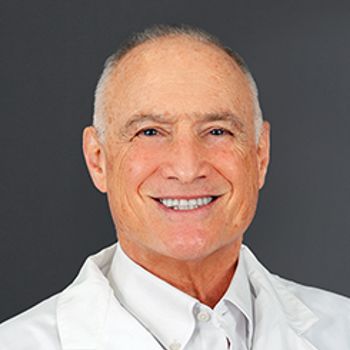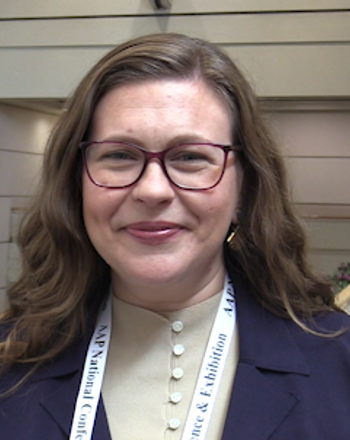
Paul Kruszka, MD, MPH, FACMG, chief medical officer of GeneDx, joined us to provide background of whole genome sequencing and its benefits.

Paul Kruszka, MD, MPH, FACMG, chief medical officer of GeneDx, joined us to provide background of whole genome sequencing and its benefits.

Stephanie Anne Deutsch, MD, MS, MSCR, FAAP, joined us to discuss a new study that highlighted SUID among infants who were prenatally substance exposed.

H. Westley Phillips, MD, explains why awareness and availability of epilepsy surgery is important for pediatric providers among drug-resistant epilepsy patients.

David Turkewitz, MD, explains how getting involved in the community to advocate for SUID awareness can make a difference in outcomes for the infant population.

H. Westley Phillips, MD, joined us to provide clinical pearls regarding the early identification of drug-resistant epilepsy patients in the primary care setting.

A discussion of tips and recommendations general providers can use when evaluating ADHD in pediatric patients.

In this video discussion, David Turkewitz, MD, offers clinical pearls to reduce the risk of SIDS and reviews the updated 2022 guidelines from the AAP.

Rakesh Jain, MD, MPH, notes that with increasing ADHD trends, a newly-available and FDA-approved non-stimulant tool can help treat more patients.

Jain breaks down key benefits of clonidine hydrochloride (ONYDA XR; Tris Pharma) to treat ADHD among patients aged 6 years and older.

Paul Helmuth, MD, joined us to discuss potentially practical ways to implement AI in practice, as well as the importance of being transparent with families when using the evolving technology.

Brittany Bruggeman, MD, highlights the importance of newer, easier-to-use glucagon formulations in treating severe hypoglycemia in patients with type 1 diabetes.

Octavio Ramilo, MD, highlights key developments in the effort to prevent RSV disease in recent years, highlights vaccines and monoclonal antibodies.

Melissa Fickey, MD, explains TMS therapy for major depressive disorder, and highlights key positive data for NeuroStar TMS Therapy, which was presented at the American Academy of Child and Adolescent Psychiatry (AACAP) meeting in Seattle, Washington.

Octavio Ramilo, MD, joins us to discuss new clesrovimab phase 2b/3 study data presented at IDWeek 2024 in Los Angeles, California.

The ongoing challenges of mental health, artificial intelligence, and the addressing of social determinants of health are key themes of pediatric health care are topics of discussion with Matthew Davis, MD, FAAP in this video interview.

Brittany Bruggeman, MD, emphasizes that many patients with type 1 diabetes are unaware of the availability of advanced technologies like CGMs and automated insulin delivery systems.

John Loiselle, MD, discusses careful pediatric exams, the growing use of ultrasound in emergency departments, and the rise of mental health cases affecting care.

Brittany Bruggeman, MD, highlighted the ability to predict type 1 diabetes months to years in advance through islet autoantibodies, and how the pediatrician can play a role.

Contemporary Pediatrics' editor-in-chief Tina Tan, MD, FAAP, FIDSA, FPIDS, talks RSV immunization and the availability of prevention tools.

Steven Selbst, MD, discusses a recent trend in emergency medicine where non-operative management of appendicitis is being considered as an alternative to traditional surgery.

Angela Chun, MEd, MD, FAAP, discusses common causes of pediatric joint pain, serious red flags, and the importance of timely diagnosis of conditions like JIA and silent uveitis.

At the 2024 AAP National Conference, Steven Selbst, MD, highlighted the rise in accidental THC ingestions among children, urging pediatricians to counsel parents on the dangers of improperly stored THC gummies that resemble candy.

Tanya Altmann, MD, discusses California's AB 899 law requiring baby food heavy metal testing, urging a balance between safety and maintaining nutrition quality.

Angela Chun, MEd, MD, FAAP, shares tips on distinguishing mechanical vs inflammatory joint pain in children, emphasizing timing, activity, and key physical exam maneuvers.

Rana Hamdy, MD, discussed her session at the 2024 AAP meeting, highlighting treatment duration with antibiotics for community-acquired pneumonia as well as the importance of understanding amoxicillin allergy.

John Loiselle, MD, FAAP, discusses pediatric musculoskeletal injuries, focusing on growth plates and age-specific anatomy at the 2024 AAP Conference.

Lori Byron, MD, emphasizes the harmful effects of extreme heat and wildfire smoke on children's health, urging education, sustainability, and collective action.

Tanya Altmann, MD, discusses the growing issue of childhood obesity in the United States and the benefits of new weight management medications.

A look into CDC numbers for increasing pertussis cases in the United States, along with commentary from our editor-in-chief, Tina Tan, MD, FAAP, FIDSA, FPIDS.

At AAP 2024, Rana Hamdy, MD, shared insights from her session, "Diagnosis and Treatment of Community-Acquired Pneumonia."